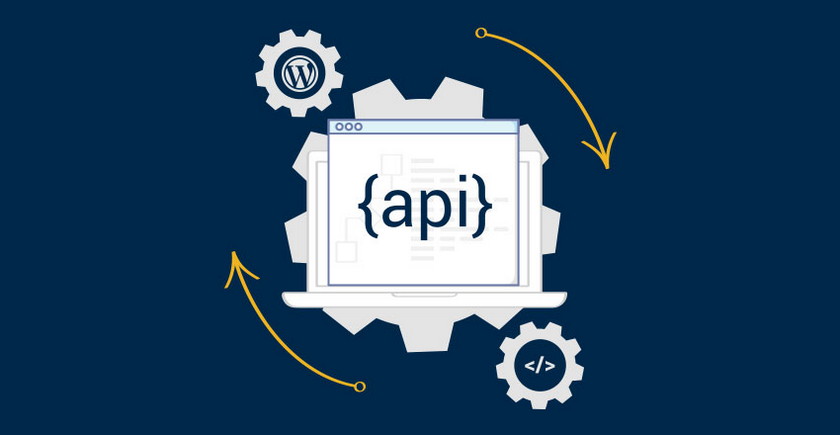有时您可能希望向远程/外部Api发出请求以获取一些数据。也许您想在博客上显示最新的微博内容,或者您想从其他WordPress网站获取最新的文章。对于这些情况,WordPress具有wp_remote_get和wp_remote_post 函数。

发出获取(Get)请求
<?php
/**
* do_remote_get.
*
* Make a get request to a remote api,
*
* @see https://since1979.dev/snippet-007-get-and-post-to-remote-api-with-php/
*
* @uses wp_remote_get() https://developer.wordpress.org/reference/functions/wp_remote_get/
* @uses json_decode() https://www.php.net/manual/en/function.json-decode.php
* @uses wp_remote_retrieve_body() https://developer.wordpress.org/reference/functions/wp_remote_retrieve_body/
*
* @param String $url The url/endpoint to call
* @return Array
*/
function do_remote_get(String $url)
{
$response = wp_remote_get($url, array(
'httpversion' => '1.1',
'blocking' => true
));
return json_decode(wp_remote_retrieve_body($response)) ?: [];
}在此代码段中,我们创建一个名为do_remote_get的新函数,该函数除了一个名为$url的参数外,该参数必须为string类型。在我们的新函数中,我们使用wp_remote_get函数发出实际的http请求。wp_remote_get函数接受两个参数:
$url(String):要调用的远程URL /端点。在这种情况下,我们将传递给do_remote_get函数的$url变量传递给它。$args(Array):请求的参数数组。这个数组可以有很多参数,但是在我们的例子中,我们只使用了两个。要使用的httpversion,并且我们将blocking设置为true,这意味着调用代码需要请求的结果。
请求完成后,我们将$response传递给名为wp_remote_retrieve_body的函数。此函数检查响应是不是WP_Error对象,并具有有效的“ Body ”。如果这样做,它将返回响应主体 Body 。如果不是,它将返回一个空字符串。
然后,我们将输出传递给json_decode函数以解码返回的Json数据。现在请记住,wp_remote_retrieve_body函数的返回值可以是一个空字符串,从而使json_decode返回一个伪造的值。这就是为什么我们在最后使用三元运算符 ?:[]来确保始终返回数组的原因。
现在,我们可以向Api发出get请求,如下所示:
<?php
$posts = do_remote_get('https://jsonplaceholder.typicode.com/posts/');
foreach ($posts as $post) {
echo "<h2>{$post->title}</h2>";
}在此示例中,我们使用新的do_remote_get函数向JSONPlaceholder Api 发出Get请求,并获取一些(假)文章。然后,我们遍历文章并回显其标题。
注意:在此示例中,我们从do_remote_get函数中获取了对象数组。如果您希望将对象作为关联数组,则可以将true作为seccond参数传递给json_decode函数。
<?php return json_decode(wp_remote_retrieve_body($response), true) ?: []; ?>发出提交(Post)请求
在上面的示例中,我们使用wp_remote_get从远程Api获取一些文章。接下来,我们将处理提交请求,以在远程Api上创建文章。
<?php
/**
* do_remote_post.
*
* Make a post request to a remote api,
*
* @see https://since1979.dev/snippet-007-get-and-post-to-remote-api-with-php/
*
* @uses wp_remote_post() https://developer.wordpress.org/reference/functions/wp_remote_post/
* @uses json_decode() https://www.php.net/manual/en/function.json-decode.php
* @uses wp_remote_retrieve_body() https://developer.wordpress.org/reference/functions/wp_remote_retrieve_body/
*
* @param String $url The url/endpoint to call
* @param Array $data The data to send
* @return Array
*/
function do_remote_post(String $url, Array $data = [])
{
$response = wp_remote_post($url, array(
'httpversion' => '1.1',
'blocking' => true,
'body' => $data
));
return json_decode(wp_remote_retrieve_body($response)) ?: [];
}对于Post请求,我们创建一个名为do_remote_post的新函数,该函数与do_remote_get函数相似,但是第二个参数$data保留要发送到远程Api的数据。
在do_remote_post函数中,我们现在使用wp_remote_post函数发出请求。wp_remote_post函数接受相同的参数,和wp_remote_get一一对应。对于arguments数组,我们传递了一个额外的参数 body ,并将$data数组变量传递给了它。
现在,我们可以发出提交请求,以在Api上创建一个新文章,如下所示:
<?php
$response = do_remote_post('https://jsonplaceholder.typicode.com/posts/', [
'userId' => 1,
'title' => 'foo',
'body' => 'bar'
]);
var_dump($response);在这里,我们使用do_remote_post函数向JSONPlaceholder Api发出发布请求,并向其传递网址/端点和代表我们要创建的发布的数组。
最后,我们使用var_dump打印来自Api的响应。JSONPlaceholder Api将仅返回我们创建的文章的Json对象。
注意: Api请求需要花费一些时间才能解决,因此最好将其缓存以加快页面加载速度。建议使用WordPress瞬态来缓存Api请求结果 。
以上内容出自: https://since1979.dev/snippet-007-get-and-post-to-remote-api-with-php/ ,由 WordPress大学 翻译整理。
拓展阅读
《 WordPress HTTP API 指南 》:本系列将详细讲解 WordPress HTTP API,涉及到常见的原创获取数据 wp_remote_get 和远程提交数据 wp_remote_post 等功能。




